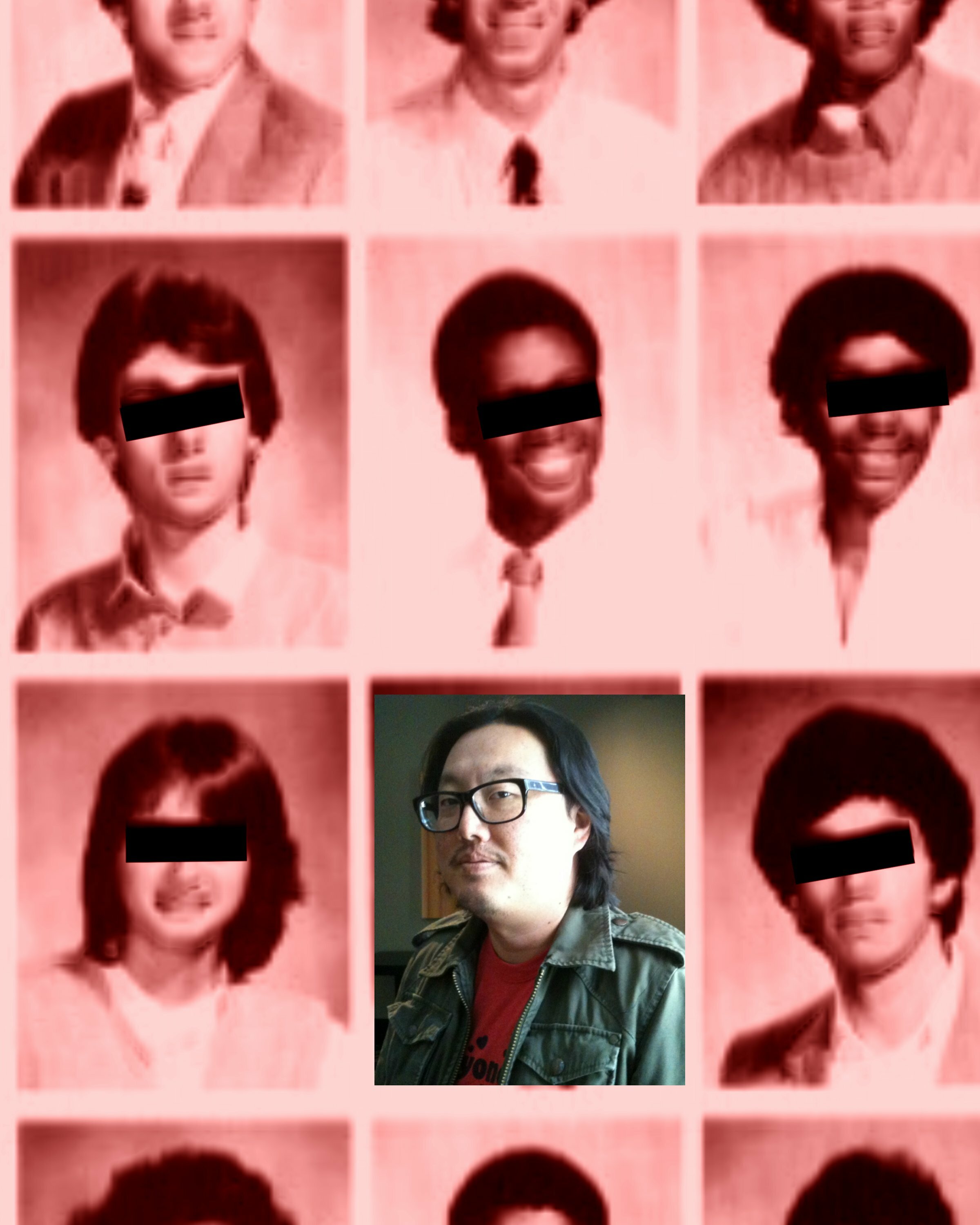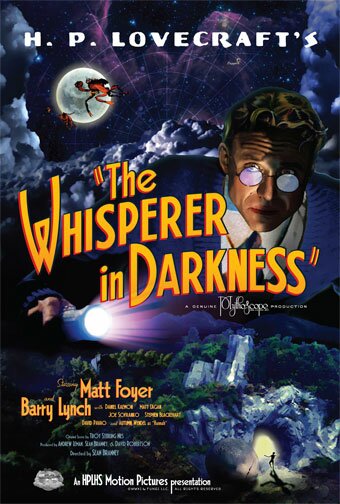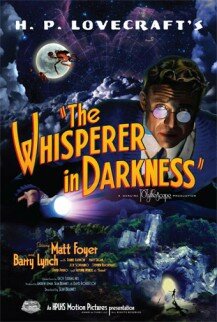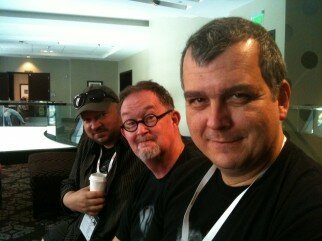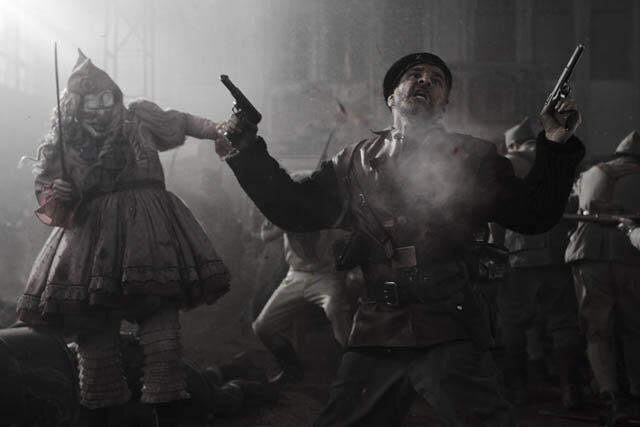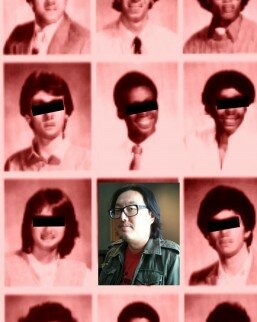
Director Joseph Kahn has been working in music video for twenty years, directing big-time efforts like U2’s “Elevation” clip and Britney Spears’ “Toxic,” among others. But he’s managed to combine that experience with his love of 1980s and ’90s pop cinema to create one of SIFF 2011’s left-field surprises, Detention.
Kahn’s sophomore feature enjoyed the last of its enthusiastically-received SIFF screenings on Sunday June 5. The movie follows Riley (Shanley Caswell), a wisecracking Square Peg of a high school girl who deals with her infatuation for slacker dreamboat Clapton (The Kids are Alright’s Josh Hutcherson), even as a masked killer runs around making mincemeat of her classmates.
Very quickly, the movie branches off into a dozen different directions, augmenting a very sharp bird’s-eye view of the little nightmares that comprise adolescence with sardonic humor, a time-travelling stuffed bear, aliens, slasher cliches, and so many meta-movie references that you’ll need to see it a second (and third, and fourth…) time to absorb all of ‘em.
But it’s more than just pastiche. All of those disparate threads intersect by the movie’s end, and Kahn delivers the entire sensory-overloaded package with pinpoint accuracy. By backing up its relentless MTV-stoked pace with a distinctive sensibility (and a heart), Detention just might signal a sea change in music video-influenced moviemaking. As The SunBreak’s own Josh Bis said, “I left feeling won over by something that I probably should have hated,” and I too came out of the screening seriously, mightily impressed.
Not surprisingly, Kahn talks like he films: fast and precise, but with so many interesting tangents and layers that it’s a fun challenge to follow along.
You were saying at last night’s Q&A that Detention was made outside of a major studio’s involvement…
Yeah. Detention is pretty much like me writing a check…I found a few people that invested in it, but it was a weird financing deal to where I had to pay them back; so it wasn’t really like investment as much as it was loans. There was no studio involved; no studio executives. There’s not even a formal producer [on the film]. I mean, I had my music video producers on, but there wasn’t anyone on who’d made movies before, or had a [film production] company or anything like that…. I think it’s about as indie as it could possibly be.
The movie looks incredibly polished. It speaks to your background in commercials and videos. There are a lot of filmmakers who’ve been working in the last twenty years in music videos and commercials, but in a lot of cases they’ll downplay or dismiss that background. You embrace that experience. That’s a relatively new notion.
What I’ve seen in the last twenty years, in terms of the whole transition of music video and commercial directors is, when they finally go into the feature-film world, they always want to prove that they’re “serious filmmakers.” Every fucking single one of them toned down the style, and stopped doing what they do in terms of music videos. They almost want to emulate filmmakers, which I think is really strange…. I think there’s wonderful work being done in videos and advertising; groundbreaking stuff in terms of montage theory and structure, and how audiences process information. You can’t translate it one-to-one, but there’s a lot of stuff you can take that can push the art form a bit more.
To me, Detention really feels like maybe the most seamless absorption of those influences into a standard motion-picture format. In its own crazy-quilt cartoon way, it feels like it’s expanding the art form with those elements; which is almost a first to me.
Wow [laughs]: That’s a great perspective.
But that feeds off of you embracing this background that you’ve had in commercials and music video. That said, could you talk to me about some of the cinematic influences on Detention?
[In] a lot of what’s done in cinema right now, especially mainstream filmmaking, commercials specifically have affected movie-making to the worst. They’ve pulled in all these commercial directors, but what they really wanted was this “Coverage Concept” of filmmaking, where you shoot medium/close-up/wide, shoot a ton of angles, you shoot with multiple-cameras. It’s sort of like the Jerry Bruckheimer style of shooting something. It looks slick, and it’s lit slick, because you can light things from certain sorts of angles and stuff with your cameras. But ultimately, it’s shot for coverage, and then you piece it together in the edit. Producers and studio executives love this style.
That’s actually not what I do, personally, in music videos. It’s harder to do in commercials, because it’s all sort of boarded out by the agency, but when I personally do my music videos, I always try to do a construction that is often blocking-intensive; where people move inside the camera space, and there’s a mise-en-scene to the thing and you can’t really edit around it.
Going to your question, a lot of that is influenced [by] the filmmakers that I loved that were doing pop movies in the eighties…specifically Steven Spielberg; the way he blocks his camera and the actors. Whenever you see a Spielberg film, he always does these long takes–I call them “mise-ettes,” light units of mise-en-scene. If you look at an average film, it’s always, like, one thing happens visually: Someone turns his head, or a person walks up to something. It’s one unit of screen space happening. And Spielberg ties it together; you could have fourteen mise-ettes happening, where one person walks in and suddenly the camera pans; another person walks in–rack focus to his hand, rack focus to someone’s head. It’s like these long layers and planes and things like that.
So Detention, if you look at its main influences, is like this weird fusion of hyper-editing here and there; also constructed with these intricate mise-ettes. That’s heavily influenced off Spielberg, and some Scorsese theories of smash cuts and things like that.
Although Detention has a pretty wicked, jet-black sense of humor, there’s actually a certain amount of sweetness to it, especially at the end. Could you speak a little about that?
Well, even though I have a pretty jaded sense of humor, I’m not a jaded person. I have a lot of hope for humanity. Also, as I get older, I’m not one of those people that looks at the younger generation and goes, “They’re all screwed up, and nothing’s ever gonna happen.” […] What’s really interesting is that I feel like, having done music videos and pop videos for the last twenty years, I’ve seen how kids today are so much more integrated than ever before; the idea that white kids love rap music, and black kids love rock music, and there’s fusion things…. It’s just such an interesting, integrated perspective of the world. I see nothing but positivity.
There are always gonna be missteps and things like that. But we elected a black president. That’s an incredible statement. So from my standpoint, humanity’s only getting better and better. I feel like maybe, in the 21st century, we are really seeing the emergence of this really sweet new culture where everybody is really, really getting along; and I like it. So I can’t make a high school movie and lie and say, “Everyone’s fucked up.” I don’t see it that way. I truly like the kids today.
It’s interesting that you talk about that duality. In Detention, you see a lot of the pains of high school and the pains of not fitting in that we all felt. But there’s light at the end of the tunnel.
There’s no question in my mind that everyone shares the pain of growing up. And I felt it was really important to put a universal message out there that, no matter how hard it is, it’s just high school. Not that your problems aren’t big, but…if you notice in the movie, it’s like every problem that happens to everybody is, like, the worst problem ever. So you have titles [in the movie] like “The Terrible Ultimatum of Clapton Davis,” “The Lonely Ballad of Billy Nolan.” In high school, everything is just so magnified, ’cause you’re experiencing all these things for the first time. And that’s really where it comes in for me. It’s like, can these kids really experience all these things, and how the hell do you survive that when the emotions are so powerful?
The visual language of all the horror scenes is quite effective. Are you a horror movie fan?
Yeah, especially from the eighties. One of the ways that I learned how to do filmmaking was reading Fangoria magazine…. When you saw all the blood and guts and effects [in the magazine], they would break it down and show you behind-the-scenes. You’d see there was a logical construction to all this stuff, how the illusion was made. And if you think about horror movies for a filmmaker, on a certain level, if you study [the genre], it’s a very clean way of saying, “How do I achieve a [goal]?” which is to scare somebody, or to make them think that someone died…. You reverse-engineer that stuff, and you start becoming a filmmaker, because you realize that one shot must lead to the next. You have master shots, you have close-ups; how do you arrange that stuff? Then that opens doors to very specific filmmakers like Hitchcock….
So as far as Detention goes, what’s the exhibition trajectory like? Is this your first film festival screening?
This is my second one; I had one in Austin [at South by Southwest]. The weird thing is, every time I screen the movie, it seems to get stronger and stronger reactions. I don’t know if it’s like a wine that’s aging–I haven’t done anything new to it since Austin–but this [Seattle screening] is one of the strongest screenings that I’ve ever seen. I can’t figure it out, except that maybe it’s because people in the Pacific Northwest are just so damned smart [laughs]. They got every reference. I’ve never seen anything like it.
It’s a high-school movie, so it’s going to skew towards that demographic. But I think it’s distinctive enough, and smart enough, and there’s enough going on, to where you don’t have to be a kid to enjoy it.
Yeah, it was a tricky balance, too, since we have this big time-travel thing and all these references to the ’90s…. The reality is, if you’re a nineteen-year-old kid, a lot of those ’90s references may not really register. Then if you’re older, a lot of the new lingo that the kids know may not really register, either. So it was a weird balance of trying to hit the older and younger target [simultaneously]. Maybe the sweet spot might be someone around 25 that doesn’t hate people who are 18; and that’s a tough one [laughs]!
